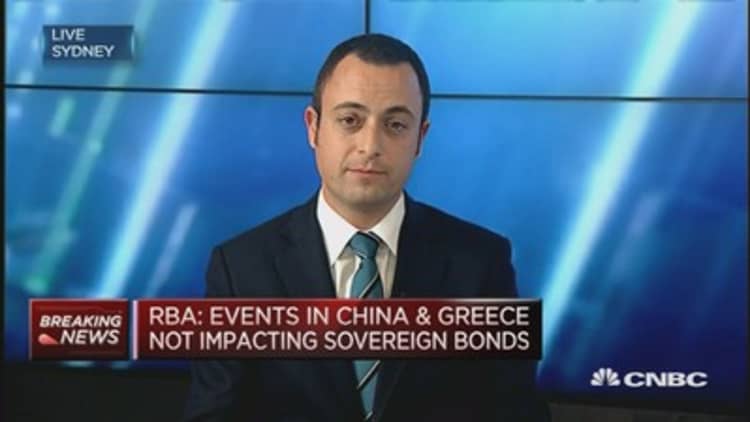Australia's top central banker on Wednesday said the prospect of more interest rate cuts remained on the table, but cautioned that too much easing could lead to longer-term dangers through risk-taking and excessive borrowing.
Reserve Bank of Australia (RBA) Governor Glenn Stevens also noted that the local currency was adjusting lower as desired and having a welcome expansionary impact on the economy.
"A period of somewhat disappointing, even if hardly disastrous, economic growth outcomes, and inflation that has been well contained, has seen interest rates decline to very low levels," Stevens said at a charity event.

"The question of whether they might be reduced further remains, as I have said before, on the table."
Rates are already at an all-time low of 2.0 percent having been cut twice this year, and the RBA has said that further action is possible given a benign outlook for inflation.
Yet Stevens was quick to point out the risks of yet lower rates, particularly that it might encourage a return to the borrowing binge of the early 2000's.
"In meeting the challenge of securing growth in the near term, the stability of future economic performance can't be dismissed as a consideration," said Stevens. "A balance has to be found."
Read MoreAustralia's RBA sets steady rate course, seeks weaker Aussiedollar
Recently the central bank has been concerned that borrowing to invest in property was heating up home prices and regulators have taken steps to restrain lending by banks.
Stevens said he has also been keen to see the Australian dollar "somewhat lower" in order to help offset a downturn in mining investment and commodity prices.
"That adjustment seems to be occurring, with relatively little disruption, and is having an expansionary effect," he said. The local currency hit a six-year low against the U.S. dollar this week and is down 21 percent on July last year.
Stevens noted that the Australian labor market was performing better than he had expected just three to six months ago, with employment growing fast enough to stop a further increase in the jobless rate.

